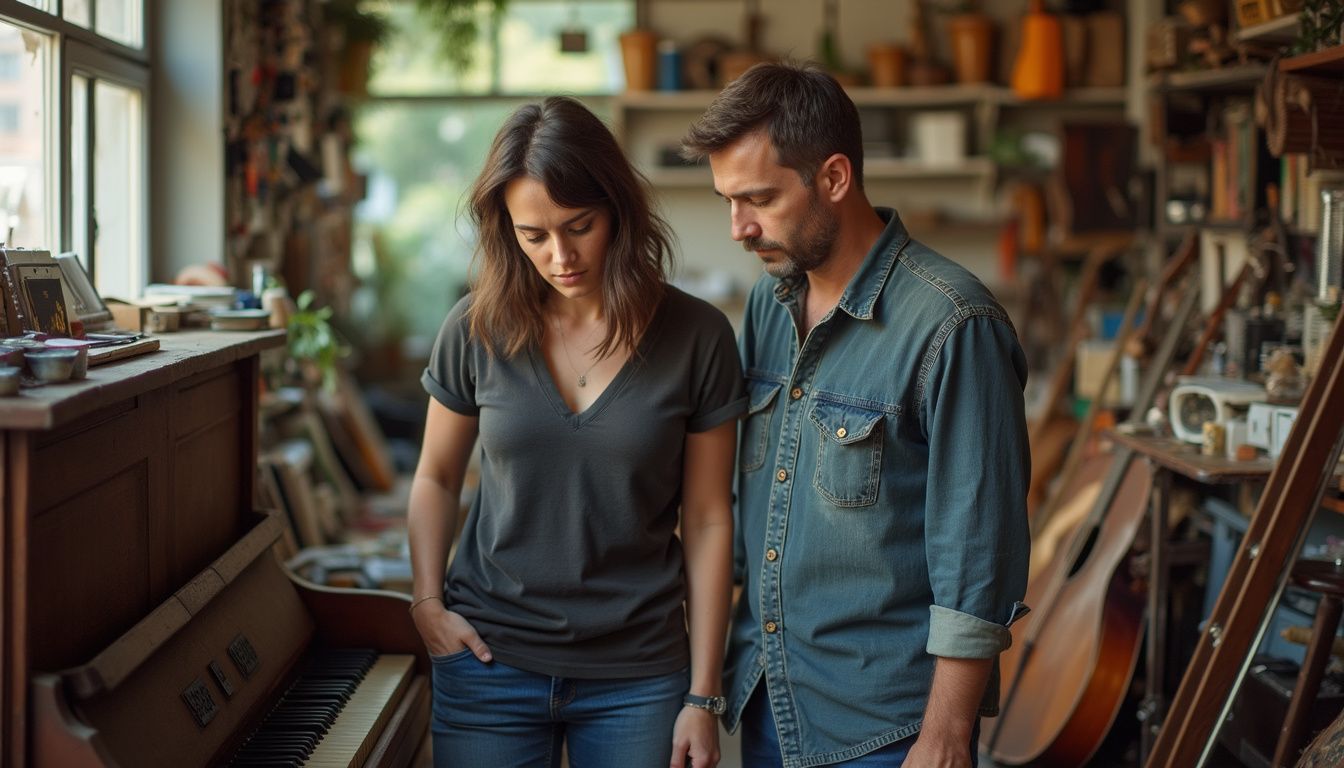Are you thinking about buying a secondhand piano? You might wonder if it’s worth your money. The good news is that many used pianos stay valuable for years and cost way less than new ones. Some people save thousands of dollars this way. In this article, I’ll show you the real costs, risks, and helpful tips to make a smart choice.
Let’s find out if those old piano keys can still make beautiful music.
Key Takeaways
Buying a used piano can save you more than half the price of a new one. A secondhand upright might cost $2,000 when the same model costs $6,000 brand new. Popular brands like Steinway & Sons, Yamaha (U series), and Kawai often pop up for sale when owners move or upgrade.
Hidden problems like dead notes, cracked soundboards, broken pedals, and loose tuning pins can cost you hundreds or thousands in repairs. Getting a professional inspection costs between $100 and $950. This small expense can save you from big surprises later.
Most used pianos don’t come with warranties unless you buy from certain stores that offer limited coverage. If you buy from a private seller on Craigslist or at estate sales, you’ll pay for all future repairs yourself.
Test every single key and listen for weird buzzing or rattling sounds during your inspection. These noises often mean mechanical problems. Check the serial number to find out when it was made. Skip most mass-produced pianos over 40 years old unless they’re well-maintained Steinway grands.
In 2025, people with smaller living rooms (about 195 square feet) will want compact uprights instead of grand pianos. Upright models from Yamaha, Kawai, and Hoffman keep their value better. Many families are also switching to digital pianos with headphone jacks for quiet practice in apartments.
Table of Contents
Benefits of Buying a Secondhand Piano

You can find amazing pianos like Steinway and Fazioli at prices that won’t empty your bank account. A good secondhand upright or grand piano brings beauty, history, and wonderful music to your home without the huge price tag.
How much can you save by buying a used piano?
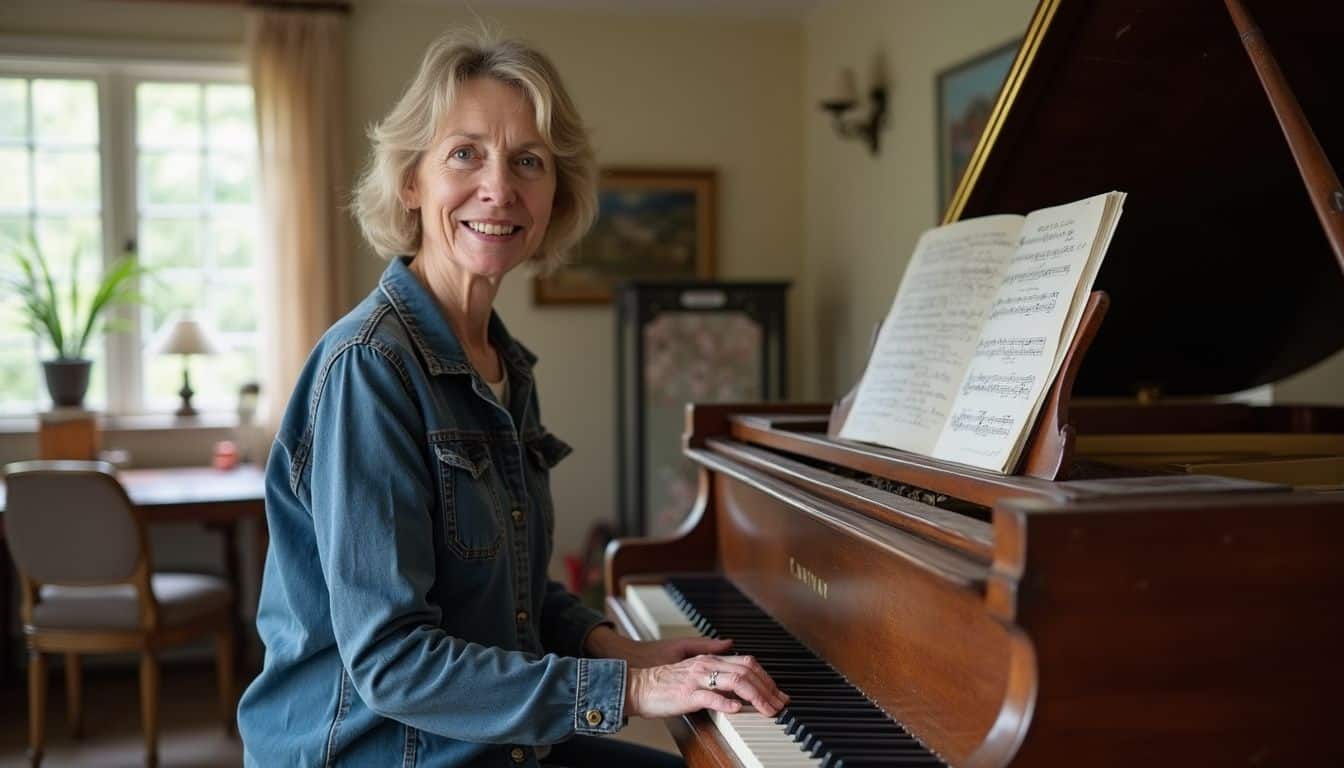
Finding a used Steinway & Sons grand piano can cut your costs by more than half. My friend bought a secondhand upright for just $2,000. The same piano would have cost her $6,000 brand new at the store nearby. That’s a huge difference!
Great brands show up in local ads all the time. People sell them when they’re getting digital pianos or moving to another country. Pianos lose value fast once they leave the store, which works in your favor as a buyer.
Small fixes and regular piano tuning cost about $200 each time. This keeps your piano sounding great without spending too much. Used uprights and grand pianos often keep their worth if you want to sell them later through piano consignment. The money you save really adds up, especially for families who want their kids to take music lessons.
“I saved thousands by skipping new and going gently used,” my neighbor Judy always says while polishing her bechstein with pride.
Consider piano consignment if you might want to sell your piano someday!
What premium piano brands are available secondhand?
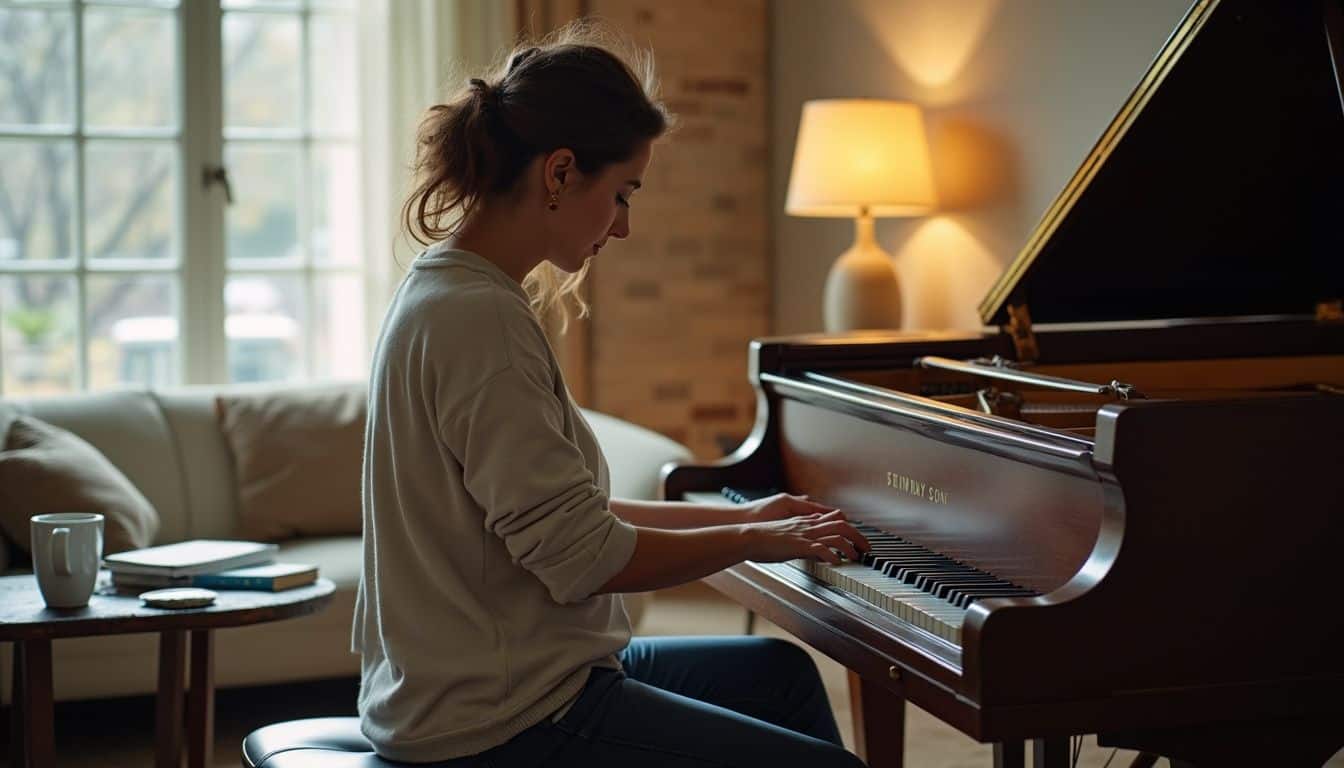 Steinway & Sons pianos show up a lot in the secondhand market. Last winter, I played a used Steinway grand that felt smooth as silk. The bass notes sounded deep and mellow. Yamaha is another big name, especially their U series upright pianos and C series grands. New piano students often use these Yamaha models for years without problems. You might also like the YDP S55 Arius Digital if you want something more modern.
Steinway & Sons pianos show up a lot in the secondhand market. Last winter, I played a used Steinway grand that felt smooth as silk. The bass notes sounded deep and mellow. Yamaha is another big name, especially their U series upright pianos and C series grands. New piano students often use these Yamaha models for years without problems. You might also like the YDP S55 Arius Digital if you want something more modern.
Kawai pianos are special because they have smooth action and clear sound. My cousin bought a 2012 model that stays in tune perfectly. Bösendorfer pianos and Fazioli still cost a lot even after twenty years. People pay high prices for them because they last so long.
Mason & Hamlin uprights are famous among piano technicians. These pianos stay in tune really well, no matter what. Baldwin is a classic American brand that many old music teachers love for its rich sound.
Keep an eye out for special finds like Wm Knabe & Co. You’ll see these at estate sales more than you’d think. Boston or Essex models, designed by Steinway, give you quality without the huge price tag. Just be careful about Yamaha “grey market” imports. They don’t work well in every climate!
Why do some secondhand pianos have unique craftsmanship and historical value?
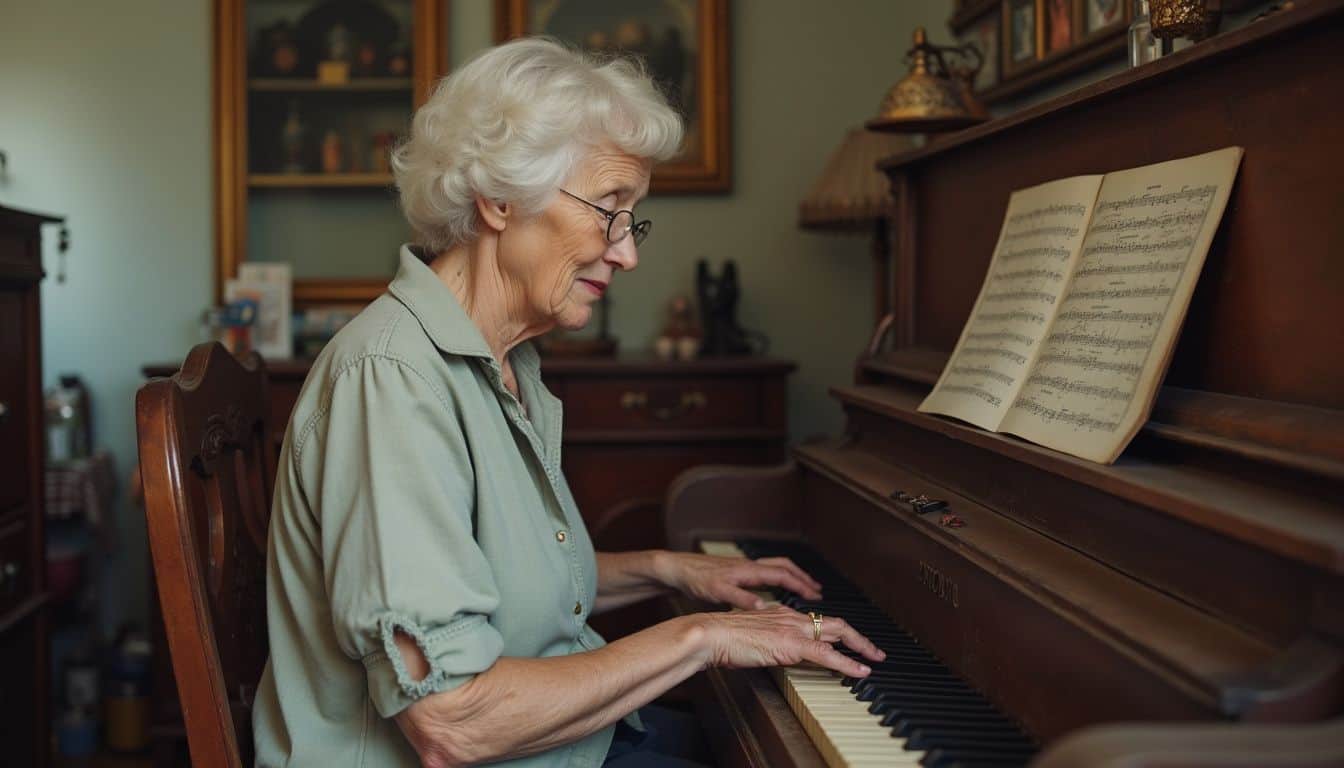
Older pianos from top brands have amazing craftsmanship and historical value. Cooper Piano fixed up a grand piano from 1900 and moved it in 2024. This piano had beautiful decorative details that you won’t find on new pianos made in factories today. Some old upright or grand pianos have real ivory keys, fancy wood designs, or special woodwork that nobody makes anymore.
A piano owned by someone famous becomes worth more just because of who played it. Families often pass down the same piano for generations. It becomes both a valuable item and a family treasure full of memories.
Fixing up old pianos makes them even more special. Collectors love original soundboards, unique sostenuto pedal features, or special piano hammers. Many families keep their old uprights even when they haven’t tuned them for years. The memories mean more to them than money. People who love celebrating special moments understand this feeling.
The market stays strong because people want music history in their homes. Expert appraisers check the piano’s age and design details like carved legs or classic parts. They also look at past repairs before setting a price. Some buyers don’t care if the piano sounds a bit off. They just love the way it looks and its story.
Drawbacks of Buying a Secondhand Piano
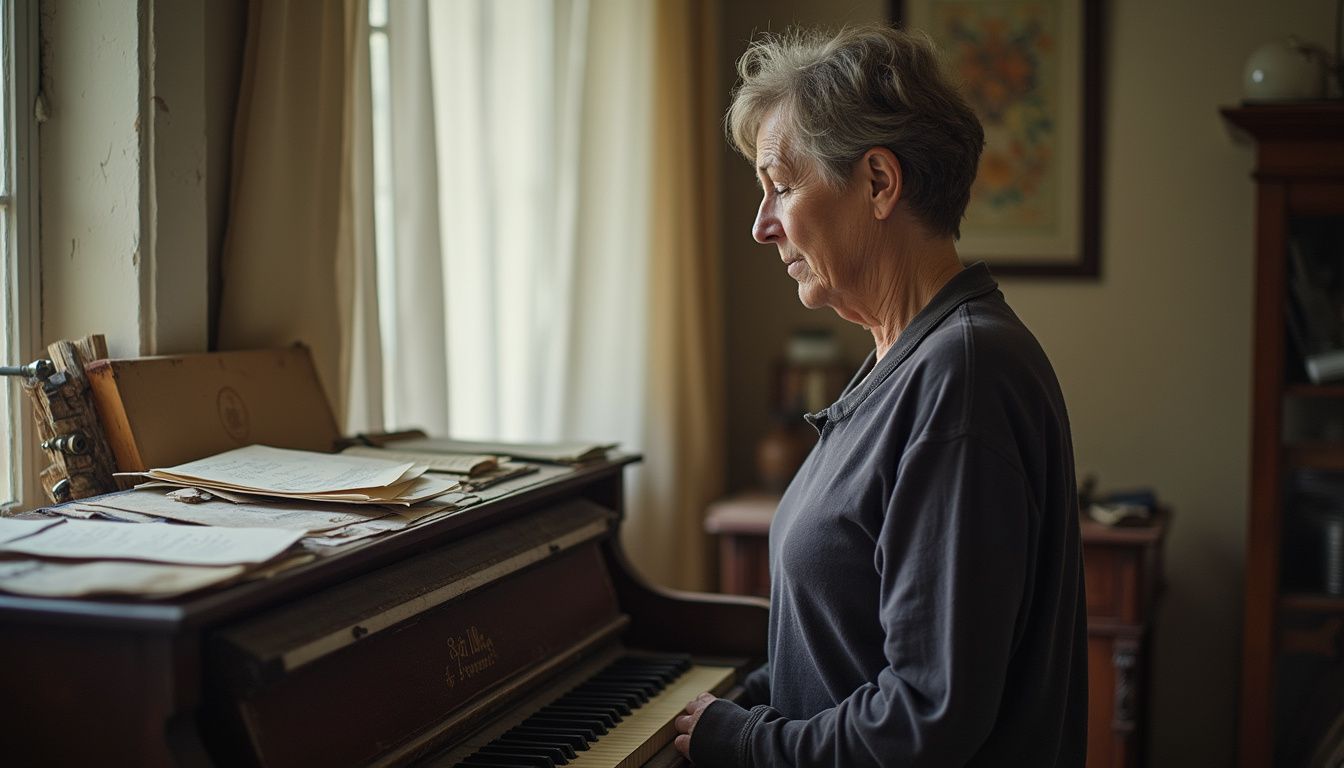
Used pianos can hide expensive problems that catch you off guard. Talking to a piano tuner before you buy can save you lots of money and stress.
What hidden problems and repair costs should you watch for?
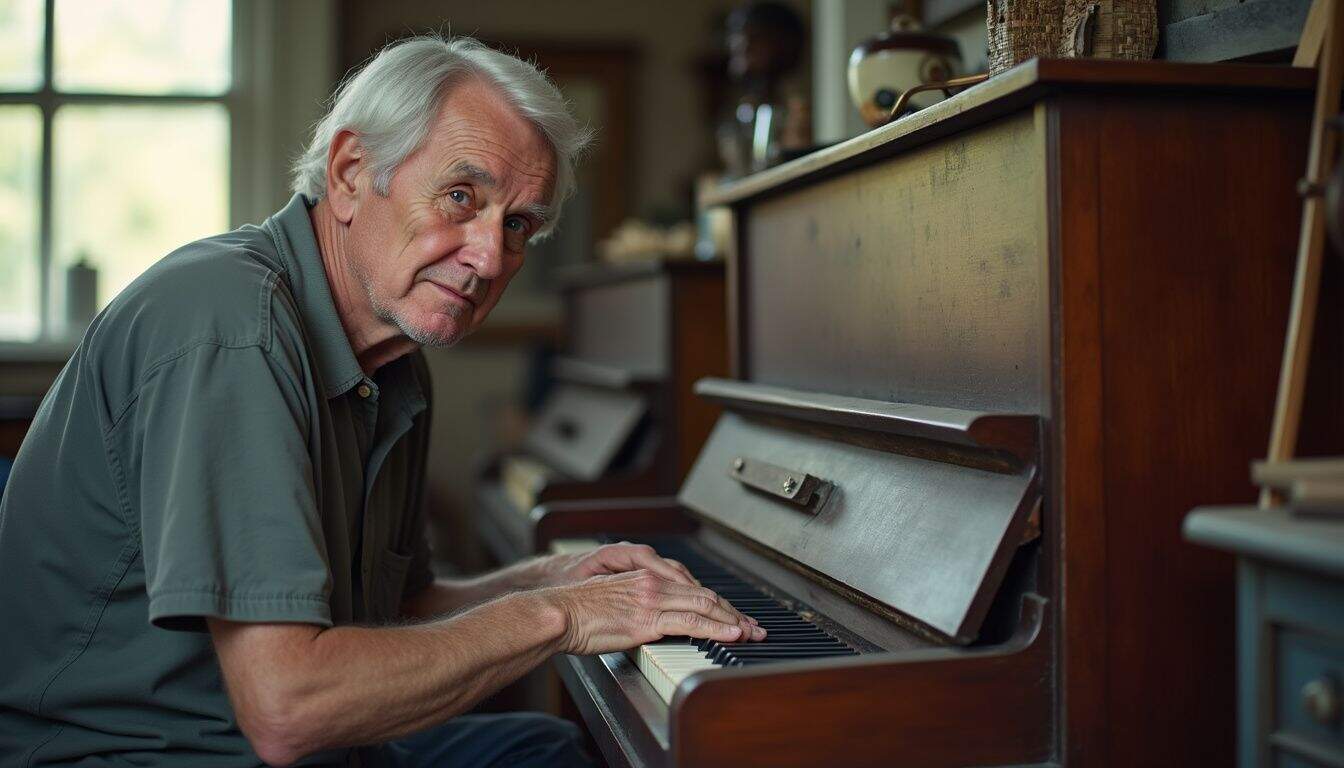
Dead notes, broken parts, and uneven sound often hide in older pianos. Free pianos usually need tons of work before they sound good. My friend found a “deal” on Craigslist last year. Her bargain cost her $900 in repairs! The piano tuner found missing strings, broken keys, and hammers that fell apart when touched. Surface scratches might look bad, but they’re cheap to fix. Broken pedals or sticky keys cost more money to repair.
Cracked soundboards spell big trouble for you. Fixing them takes lots of time and money. Tuners sometimes call cheap pianos firewood when the pinblocks or bridges fail. Those repairs cost more than the piano is worth.
Old or worn hammers get pricey too. Replacing them can eat up your savings fast. If nobody has tuned the piano for years, you’ll need several tuning sessions just to make it stable. Soundboard cracks ruin the sound and make the piano go out of tune quickly. Check everything carefully before buying, or think about piano rental for events if the repair costs seem too high.
Can you get a warranty or guarantee with a used piano?
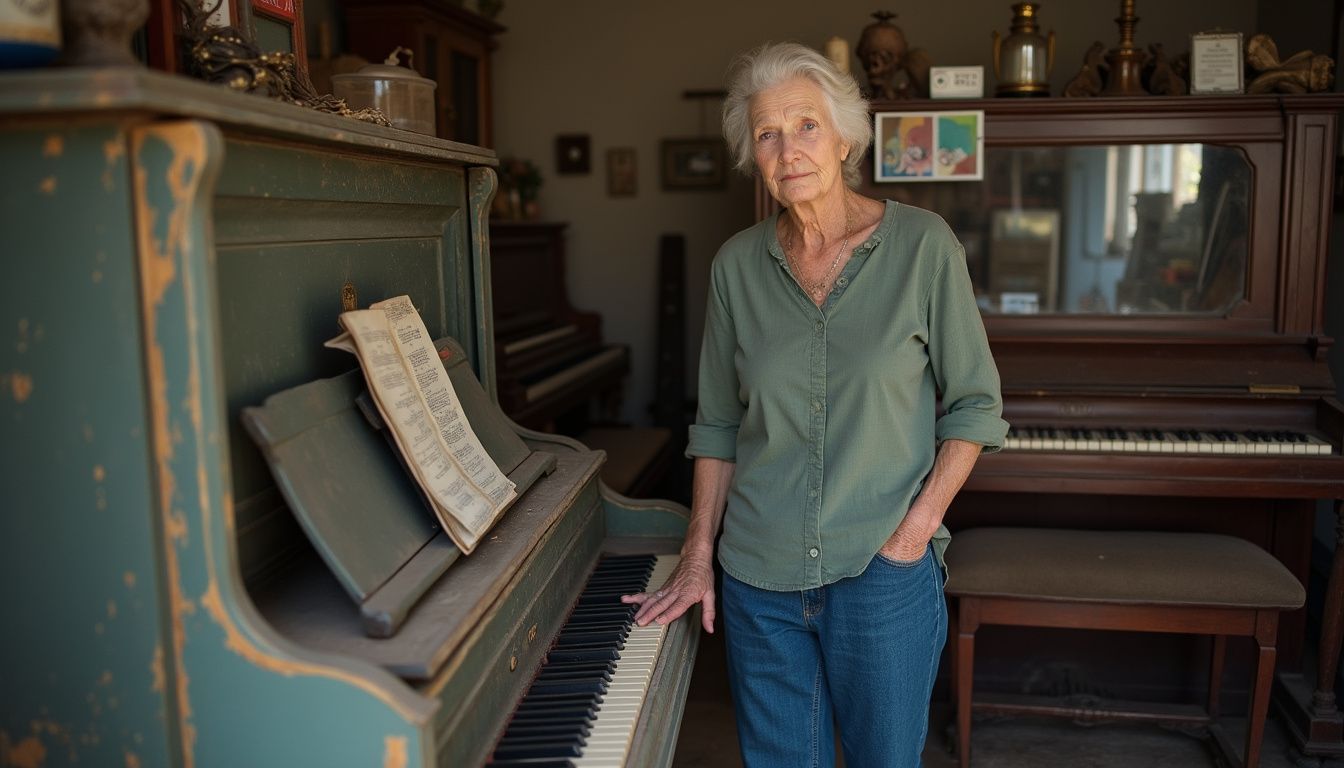
Most used acoustic pianos come with no warranty at all. I bought an old Steinway from a family in my town once. It sounded beautiful, but the sale came without any promises. Piano makers don’t transfer their warranties after the first sale. As my technician told me, “buying secondhand means going in blind.”
Some stores offer written warranties for your peace of mind, but these have lots of limits and fine print. Many dealers won’t honor claims if you live far away or need repairs later. Pianos have more than 12,000 moving parts. The serious problems usually show up early in the piano’s life anyway.
Private sales through schools or churches never include guarantees. Once that piano leaves their building, you own all its problems. Digital keyboards are different; some brands still offer coverage you can transfer. Just check each model carefully before you sign anything. Extended plans from shops often cover very little beyond what already expired from the maker.
“Buying used means owning every creak and ping,” said Mr. Chang, my trusted repairman.
How can you accurately assess a secondhand piano’s value and condition?
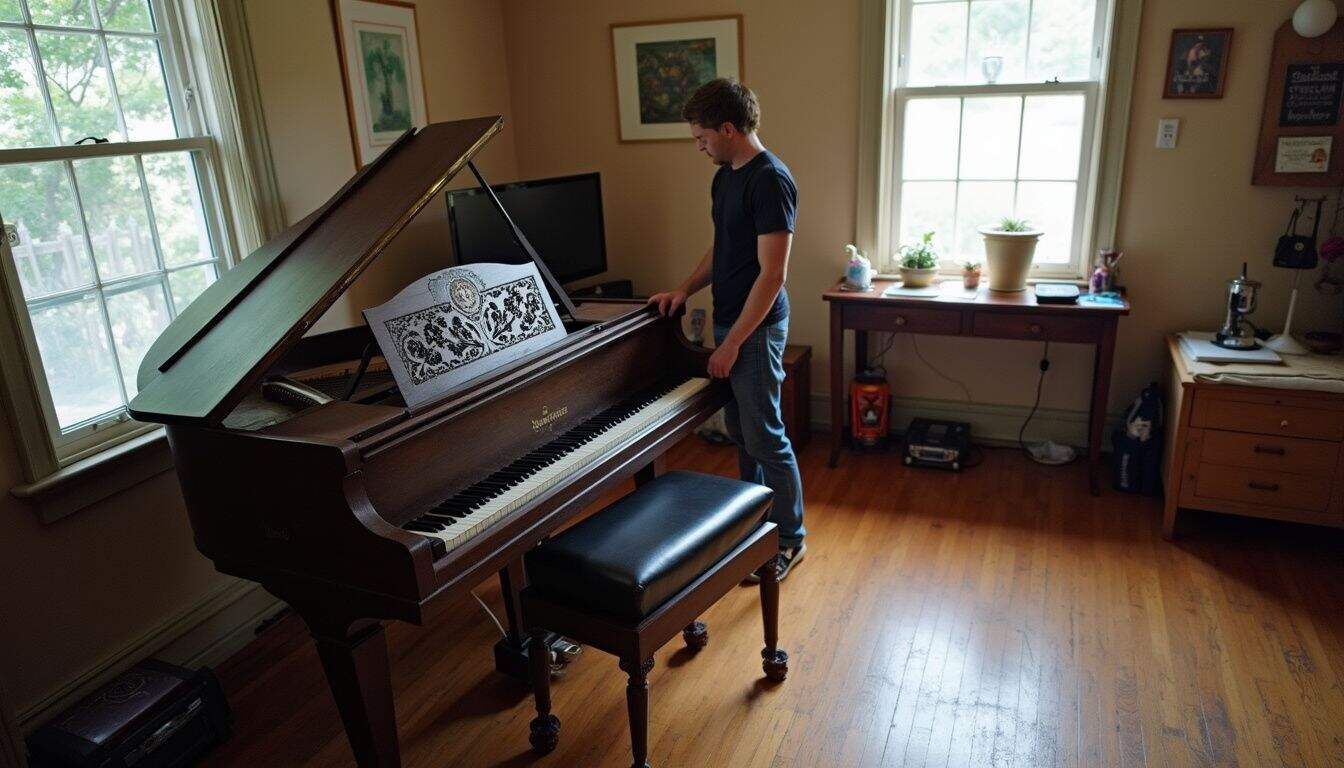
Secondhand pianos don’t come with safety nets like warranties, so you need to check them carefully. Looking at the brand name isn’t enough. Start by checking important facts like who made it, what model it is, when it was built, and whether it’s an upright or grand piano.
Websites like PianoMart.com help you compare prices in your area. Most pianos made more than 40 years ago aren’t worth much. The exception is Steinway & Sons grands; those can stay valuable for many generations. Sound quality matters most when checking a piano. Next comes its condition, then its style or finish.
Professional appraisals cost between $100 and $950. They’re worth it if you need to know about big repairs or fair prices. Think about local demand before making an offer. Resale prices change based on where you live. A piano that’s been restored often costs more than one that nobody has touched. This is especially true for antiques or pianos owned by famous musicians. Some families even keep old receipts for decades, which helps prove the piano’s history.
How to Evaluate a Secondhand Piano
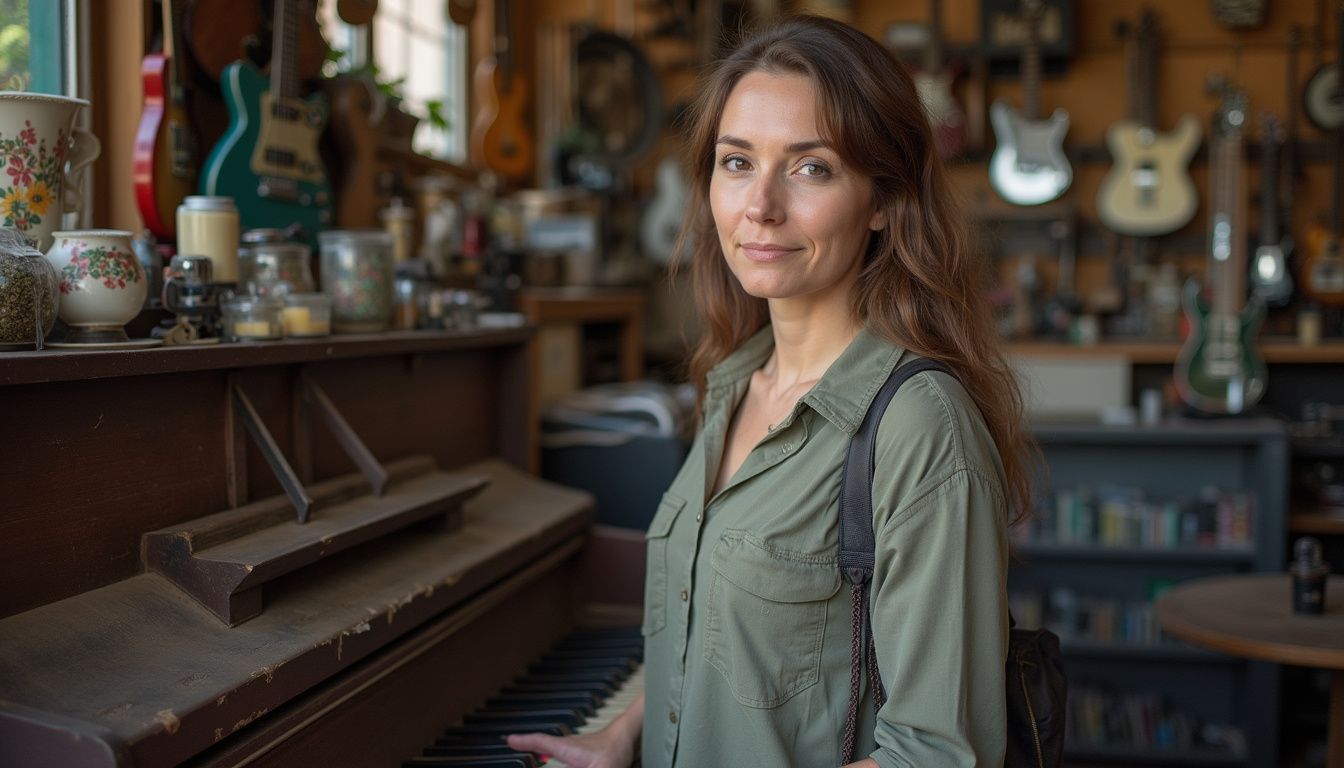
Check the keys, listen to each note, and look at the pedals carefully. These simple tests will show you if you’re getting a good deal or a money pit.
What should you look for when inspecting the keyboard, pedals, and condition?
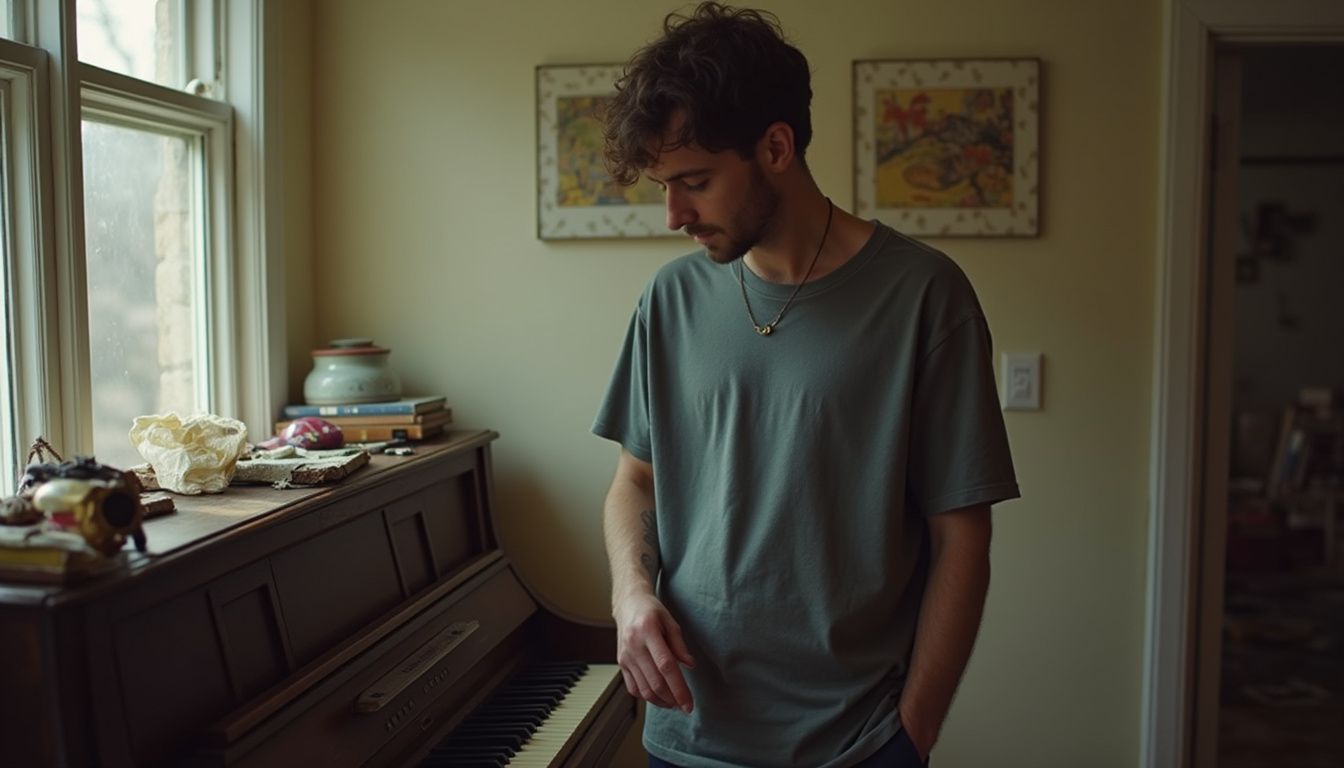
A piano’s feel shows you a lot about its health. Use your eyes and hands to check everything before you buy.
- Look at every key for cracks, chips, or strange colors. Damaged keys mean trouble.
- Press each key from low to high notes. Slow bounces or silent keys mean mechanical problems inside.
- Look down the keyboard rows. Crooked or sunken keys point to bigger issues than just appearance.
- Press each pedal. The sustain, soft, and sostenuto pedals should move smoothly with the right amount of resistance.
- Check for missing or broken parts like keys, pedals, or screws. Fixing these costs money.
- Look at the piano’s outside for deep scratches, dents, water spots, or worn areas.
- Look inside for dust and signs of bugs. Mice and insects often damage pianos behind the pretty outside.
- Check tuning pins and strings for rust or wobbling. Loose pins mean the piano won’t stay in tune.
- Look closely at the soundboard and bridge. Cracks or warped wood ruin the sound and shorten the piano’s life.
- Use the serial number to find out when it was made. Age affects value just like appearance does. A 1928 Steinway might charm you, but a cheap 1980 spinet could cost too much in repairs.
For more tips about checking secondhand pianos, visit second hand pianos.
How do you test the sound and action of each key?
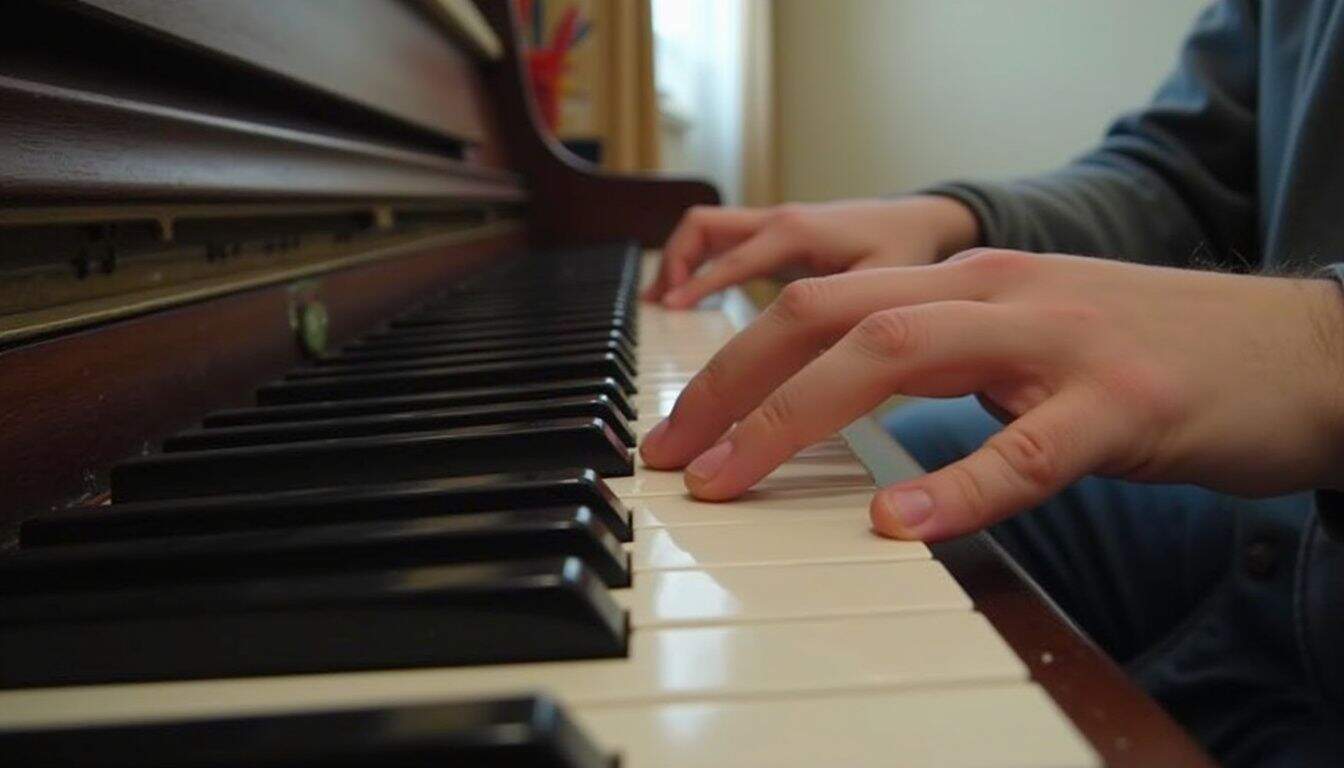
Every key should sound clear and feel smooth when you press it. Take your time with this test. Rushing through it can cost you money later.
- Play every single key from the lowest to the highest. Listen for dead or silent keys and make sure each one makes a sound.
- Press each note with different amounts of force. Soft touches and hard presses both matter. Keys should respond the same way no matter how you touch them.
- Hold notes down to test how long they last. Each sound should stay steady without fading too fast.
- Listen for buzzing, rattles, or weird noises while playing. Strange sounds usually mean problems inside like loose parts.
- Check how notes sound together by playing simple chords anywhere on the keyboard. Every note in the chord should match in strength and quality.
- Press several keys quickly at the same time in different areas. Chords and fast runs shouldn’t stick or slow down.
- Test the fullness by playing low bass notes and high treble notes separately. Rich overtones show healthy strings and soundboard.
- Run your hands over all the white and black keys. Sticky, loose, or uneven keys need fixing, so check every single one.
- Look at the key colors in good light. Color changes might mean water damage or years of heavy playing.
- Play different types of music: classical scales, pop rhythms, fast runs, soft melodies. This shows if the piano matches your playing style.
- Open the lid if you can and look at how the action parts line up inside. The spacing should be even with no extra dust or wear.
My last piano had three sticky keys that made playing Chopin impossible! Always test everything before buying to avoid bad surprises later.
How can you identify buzzing, rattles, or tuning problems?
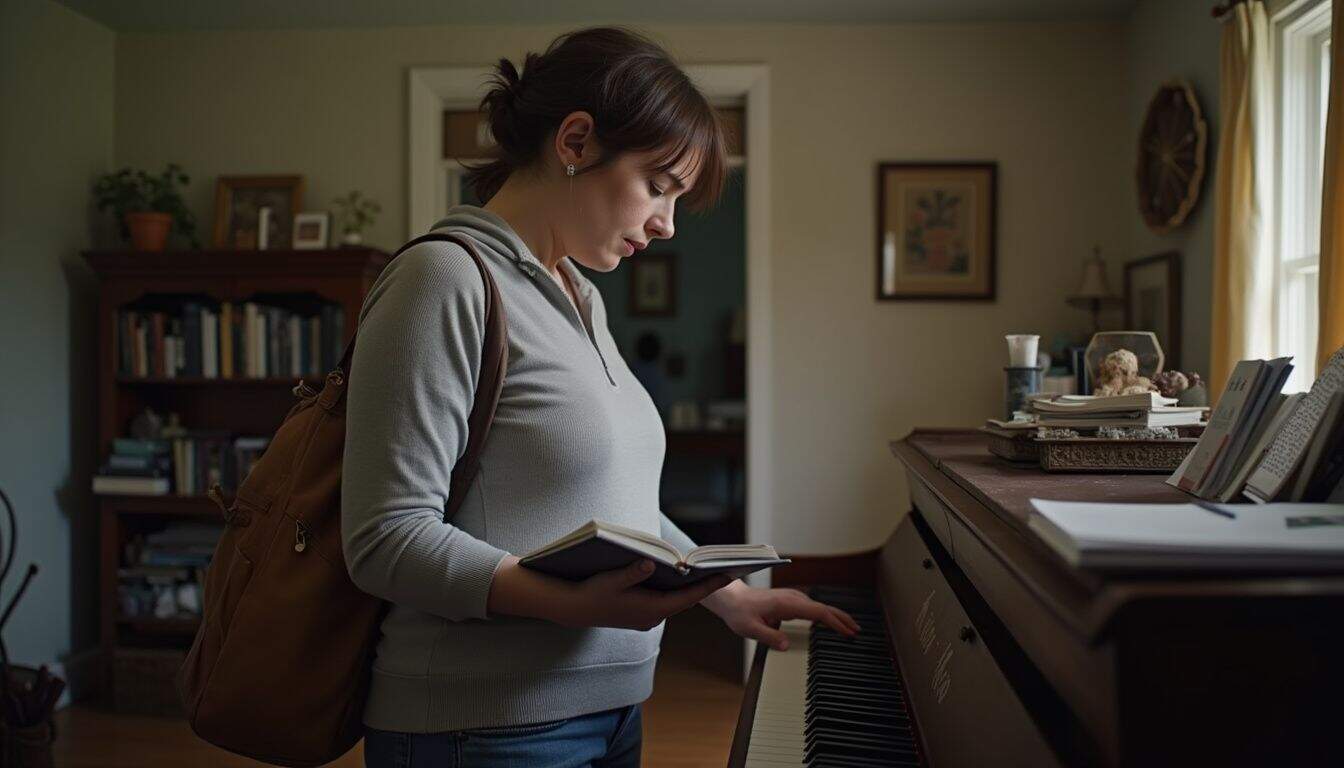
Finding noises and tuning problems in a secondhand piano saves you money and headaches. Get a notebook and your phone ready. Time to play detective.
- Press every key one by one from the lowest bass to the highest treble. Write down any uneven sounds or keys that stick.
- Listen for buzzing or rattling sounds as you play. These often mean something is loose inside or there are cracks in the soundboard.
- Tap each key softly, then hard. Squeaks, clicks, or wobbly movement mean worn action parts that might need fixing.
- Test several notes at once with basic chords. Out-of-tune groups might mean difficult repairs ahead.
- Push or wiggle each pedal. Strange noises or shaky movement point to damage under the keyboard.
- Hold down a note and listen after you let go. Bad dampers let the sound ring too long and need more work.
- Check tuning pins with a flashlight. Loose pins cause problems. The piano won’t stay in tune no matter what you do.
- Use your phone’s recorder during your test. Strange rattles might only show up when you listen to the recording later.
- Run your fingers along the soundboard edge looking for visible splits or water damage. Problems here make the sound worse fast.
A few minutes of careful checking can save you from buying a broken piano instead of a beautiful classic.
Tips for Purchasing a Secondhand Piano
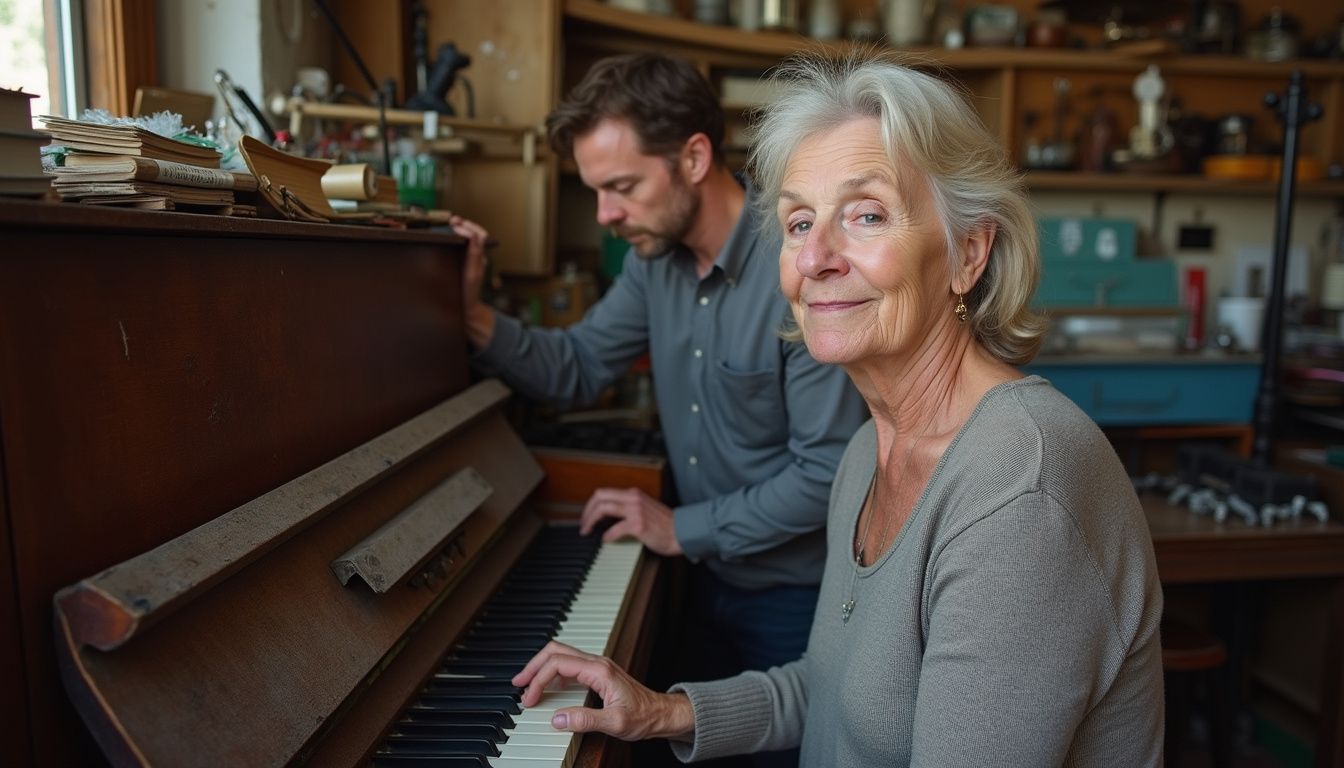
Getting help from a skilled tuner can prevent big problems. Remember to think about moving costs and repair bills before you make any deals.
Why should you hire a professional piano technician for inspection?
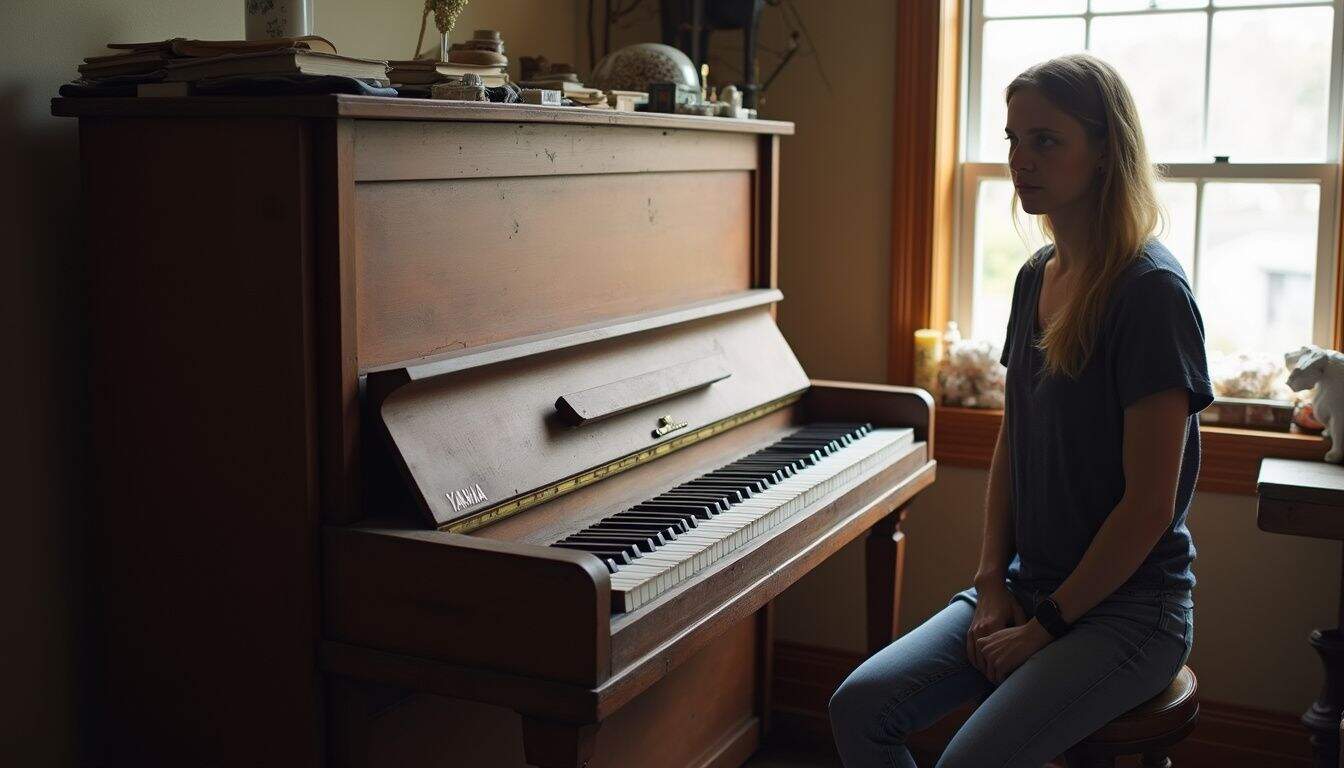
A professional piano technician sees problems you’ll probably miss. My friend Sarah bought a secondhand Yamaha upright that sounded fine to her. After she moved it home, the bass notes were completely flat. Two keys squeaked like an old swing set. A $300 inspection would have warned her about worn hammers, loose parts, and cracks in the pinblock hiding inside. Technicians catch these hidden problems before you spend your money.
Technicians check the outside for deep scratches and test every pedal for smooth movement. They also test how well the keyboard responds to your touch. Inspections usually cost between $100 and $950. The price depends on where you live and how valuable the piano is. Steinway fans never skip this step. They want to know if repairs or restoration are worth the money.
Paying an expert now means fewer surprises later, says seasoned tuner Tracy Hillman.
Technician reports also help you make a fair offer. Nobody wants shock when the piano arrives at their house. Let’s look at which brands last over time, and which ones cause problems later.
Which brands are reputable, and what models should you avoid?
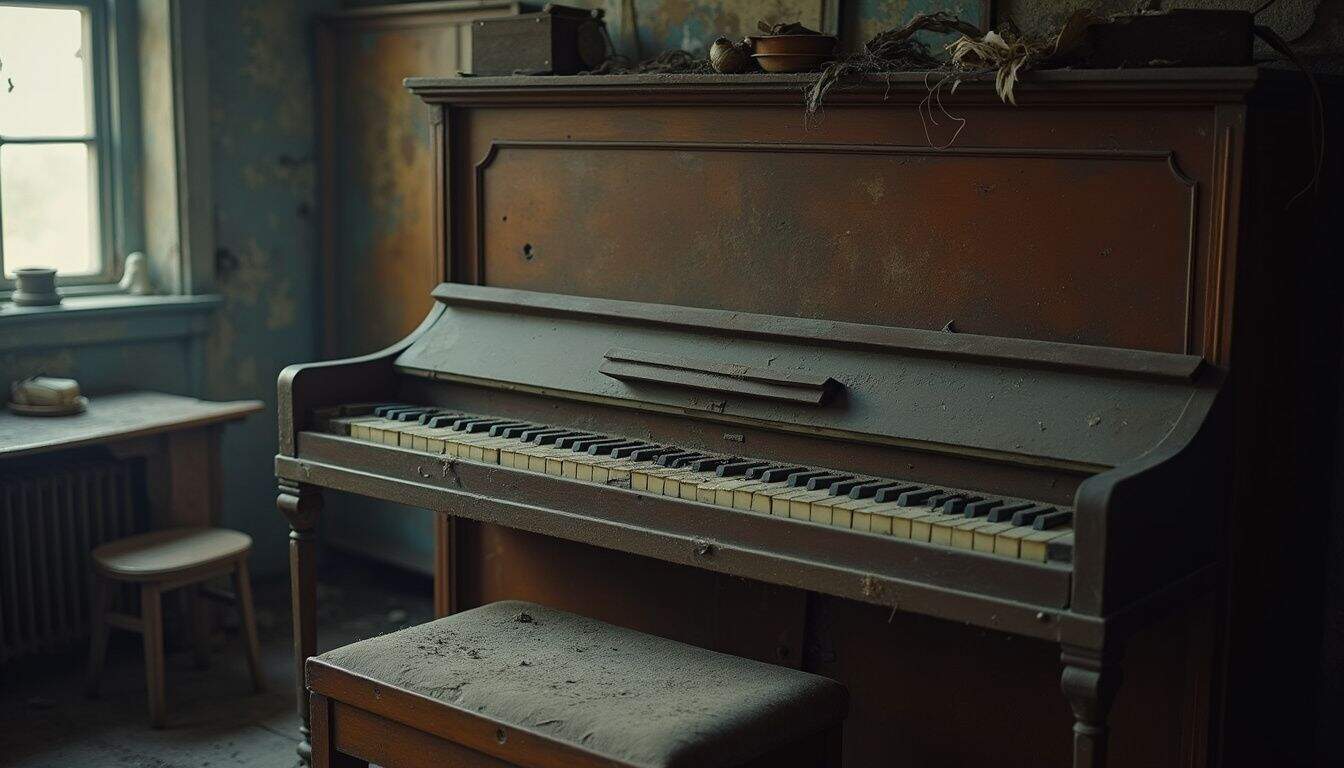
Yamaha, Steinway & Sons, Kawai, Bösendorfer, and Mason & Hamlin are trusted names for secondhand pianos. These brands keep their value well if you pick the right ages. Look for Steinway grands under 40 years old or Yamaha and Kawai under 15 years. A Yamaha U series upright or C series grand is money well spent. European brands like Bösendorfer also stay valuable if they’re under 20 years old.
Avoid pianos over 40 years old unless it’s a Steinway grand that someone took good care of. “Grey market” Yamahas from Japan don’t work well in US homes. The climate differences make the keys go out of tune faster than milk spoils in summer heat.
Some Asian-made pianos have cheaper parts inside. Pearl River works best if it’s younger than ten years. Samick brands like Knabe and Kohler & Campbell do okay under fifteen years. Watch out for keys that don’t stay in tune, strange buzzing, rattles, and poor maintenance records. Skip these pianos no matter how good the price seems.
How do you budget for repairs and transportation costs?
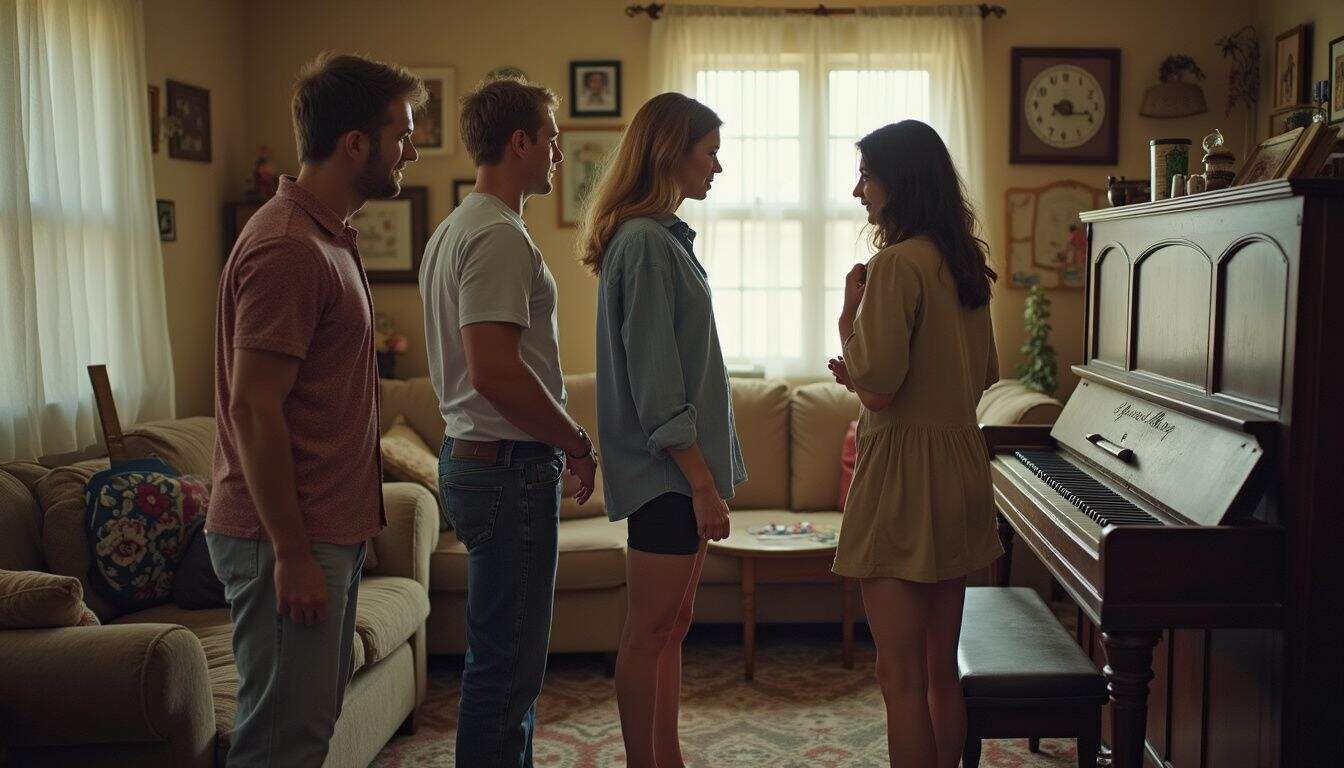
Figure out moving costs first. Delivery can start at just $20 from a charity shop. Private movers charge much more, especially for grand pianos or long trips. Always ask if the seller includes delivery in the price. This simple question can save you hundreds of dollars.
Save at least $200 every year for regular piano tuning. This isn’t optional; it keeps your piano working properly. Small repairs like fixing scratches on the cabinet or sticky keys stay cheap if you catch them early. Let them go too long, and the costs add up fast.
Big fixes like cracked soundboards or rebuilding the pinblock can empty your bank account. Sometimes these repairs cost more than buying another used piano. Put extra money aside right away for unexpected problems. Older pianos usually need more care and attention over time. Think about ongoing maintenance costs, insurance, and restoration work if you’re buying an antique worth preserving.
How will the secondhand piano market change in 2025?

Living rooms keep getting smaller. They’re now about 195 square feet instead of 212. This change pushes more people to choose upright pianos instead of grand ones. Yamaha, Kawai, and Hoffman make uprights that fit in small spaces. These pianos still sound great and keep their value well.
Upright models hold steady resale value. You can buy used without worrying too much about losing money if your plans change. Materials and labor keep costing more each year. Waiting to buy could mean paying higher prices for both new and secondhand pianos in 2025.
Digital technology keeps improving too. Digital uprights now give beginners excellent sound quality. They also have useful features like headphone jacks for quiet practice when kids are sleeping. Shoppers will find more choices at different prices as families trade their large grands for compact uprights. These smaller pianos fit better in modern homes.
I once squeezed a Yamaha upright into a tiny studio apartment. It wasn’t easy, but it was worth it! The piano lasted for years and still sounded rich and beautiful.
People Also Ask
Are secondhand pianos a smart buy or just trouble waiting to happen?
A used piano can be a bargain if you know what to look for. Many have years of music left in them, but some hide costly problems under the lid. Always check for cracked soundboards, sticky keys, and worn hammers before handing over your cash.
What costs should I expect when buying a pre-owned piano?
The sticker price is only the start. Factor in moving fees; these instruments are heavy as boulders and need pros with strong backs. Add tuning after delivery since most old pianos lose their pitch on the ride home. Repairs may sneak up too, especially if parts are rare.
How do I spot risks when shopping for an older instrument?
Ask about its history like you would with a used car; water damage or long storage in damp basements spells trouble down the road. Play every key and listen for odd sounds or buzzing strings that hint at deeper issues inside.
Any tips to make sure my purchase hits all the right notes?
Bring along someone who knows their way around ivories—maybe even hire a technician for peace of mind during inspection day. Trust your ears and fingers more than fancy polish or sweet talk from sellers; sometimes charm hides flaws that cost big bucks later on!
References
https://houstonpianocompany.com/advantages-of-buying-a-pre-owned-piano-over-new/ (2024-01-27)
https://blog.rivertonpiano.com/2024/09/21/how-important-are-piano-warranties/ (2024-09-21)
https://cooperpiano.com/how-to-determine-used-piano-value/
https://www.lanemusic.com/what-to-look-for-in-a-used-piano-before-buying
https://www.integritypiano.com/usedpianos/evaluatingusedpianos.html
https://masterpianoservices.com/2016/04/06/used-piano-buying-the-inspection/
https://msteinert.com/blog/what-to-know-before-buying-a-piano-first-time-buyer-tips (2025-04-14)
https://www.richardlawsonpianos.com/upright-pianos-2/5-reasons-to-purchase-an-upright-piano-in-2025/ (2025-04-25)
